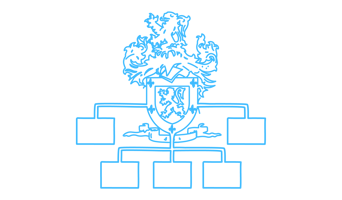Rightsizing, in contrast to downsizing, takes a proactive, long-term view of a company’s cost position. This blog post discusses five imperatives to consider when embarking on a rightsizing initiative.
Why rightsizing actually matters, or, when is rightsizing smarter than downsizing?
Rightsizing is commonly contrasted with downsizing, in that rightsizing goes beyond simply cost-cutting across the board. Unlike downsizing, rightsizing is considered to be more holistic and sustainable, and, therefore, more strategic than simply focusing on the bottom line in the short term.
If we define rightsizing as a ‘more strategic’ and smarter approach, we have to spell out what that actually implies. We suggest that rightsizing:
-
is proactive
-
takes a participative approach (and is able to do so, because of being proactive)
-
is systematic and analytical
-
masters the process from end-to-end
-
takes a long-term view of human capital
1. Rightsizing requires a proactive approach, rather than a reactive one, which allows you to avoid fire-drill style cost reductions typical of downsizing endeavors
Rightsizing initiatives can, and should be, initiated when there is no immediate pressure on a company’s cost position or profitability.
Downsizing as an emergency, fire-drill style cost-cutting action, usually comes into play when it is obvious to most stakeholders that things can’t continue as they have been. By then, however, things often have become so bad that resizing the organization is too painful and risky. In the interest of survival, you may be forced to make moves you would never make if you had more choices.
However, most large organizations (with the exception, perhaps, of the most disciplined, low-cost players) tend to develop operational inefficiencies and wasteful bureaucracy over time. But if we look at it another way, they create opportunities to review their organizations for waste, rightsize them accordingly, and create additional, sustainable value for the benefit of their stakeholders, as well as long-term prosperity.
Proactive approaches towards rightsizing start with building the capabilities to identify and execute opportunities to resize the organization for valuable improvements. Note that this implies an investment that requires leaders to make the case that it is worth it.
Get all the expertise, tools and guidance you need to redesign your organization
2. Proactive rightsizing allows for a participative approach to identifying unnecessary cost, waste, and mistaken priorities
Emergency cost reductions typically require centralized, top-down approaches. There’s often no time for lengthy analysis, sensemaking, or alignment on the most meaningful approach. Top managers must take the lead, and often specialists apply outside-in judgement (sometimes with reference to dubious “benchmarks”) in order to justify painful cuts.
By contrast, a proactive rightsizing approach provides the opportunity for a participative approach, allowing decentralized actors to bring their best knowledge to the discussion of how to become more efficient. Doing the work of resizing before you are absolutely forced to do it allows for productive involvement of stakeholders, buy-in, and broad capability building.
There are two broad sets of capabilities that you need in order to empower a proactive, participative approach towards continuous rightsizing: the process capability (point 4) and the analytical capability (point 3). Let’s look at each set of capabilities.
3. Smart rightsizing involves a systematic analytical approach to identifying, evaluating, and defining rightsizing measures
The analytical tool set required varies by industry, type of operation, function, and other context factors.
In our experience, it is generally helpful to distinguish three broad dimensions for rightsizing your organization, operations, and overall cost base:
A Structure
B Processes
C Expenses
Structure refers to your overall organizational structure, including, for example, the layers of management decision-making. Rightsizing questions focus on whether the structural set-up, the division of labor, the different areas and layers of management responsibility, and the budgetary proportions, as well as the activities of the different units, evenly contribute to the organization's value creation promise. High level strategic questions, such as portfolio considerations, footprint decisions, and outsourcing options, also fall into the broad realm of structure.
Processes refer to your overall set of business processes and support processes. The rightsizing questions for processes generally refer to the amount of waste within those processes, for example, deploying proven methods, such as value stream mapping. Digitization is among the frequently applied approaches to automate and streamline processes.
Expenses refer to any spending along the organization’s value chain, including discretionary spending and external spending on suppliers.
Note that elaborated management disciplines, such as operational excellence and strategic supply chain management, may cut across these three dimensions. For example, operational excellence has a strong process angle, while simultaneously requiring strong anchoring in organizational structure to be sustainable.
4. Rightsizing a company means mastering the rightsizing process end-to-end
When cost reduction exercises fail, it is often due to a failure of execution: The best analysis and the juiciest potential outlined in the shiniest PowerPoint slides are worth very little if the implementation program falls short by comparison.
This implies a strong governance structure, dedicated leadership focus, metrics, and adequate resources. The same applies for an impactful rightsizing approach as defined above. Rightsizing is not a “softer” approach than downsizing; it is the more sensible approach.
Companies that seek a continuous focus on rightsizing therefore need to build up corresponding process management capabilities in addition to their analytical capabilities (see point 3 above).
If this sounds abstract at first, imagine a joint HR and CFO task force in a large, multidivisional organization starting to build its agenda for a first rightsizing initiative. The following tasks and requirements would need to be addressed (note that this list is not exhaustive):
-
Defining a central platform and/or team to serve as a “center of competence” and running/coordinating according initiatives
-
Building the knowledge base and method toolbox to support interventions on the skill side; this includes ongoing learning from and across intervention episodes
-
Developing criteria and evaluation approaches to prioritize and focus efforts in line with strategic priorities and with sound cost/benefit hypotheses
-
Designing a repeatable intervention format to initiate rightsizing work in different parts of the organization, if applicable
-
Setting up and supporting process and project governance structures, including metrics and reporting processes, to create transparency, both for the overarching initiative and also for concrete interventions and rightsizing efforts across the organization.
See the process guidance within the Organizational Structure Kit for example considerations when setting up and running organizational design and change work.
5. The people side: a continuous focus on rightsizing means having human capital development plans in place (and being able to follow them)
Taking a proactive approach to rightsizing means that the overall set of resizing measures can be more balanced and less disruptive than in fire-drill style exercises. This also applies to the one measure that is most painful for individuals and most disruptive to an organization’s capabilities during emergency downsizing: laying off employees.
A continuous rightsizing approach gives a company and its HR function the opportunity to implement adaptations in line with long-term people development plans. HR can observe capabilities, individual skills and potential, and employee demographics (including organic dynamics, such as fluctuation and retirement) as part of its work process (see point 4 above) as changes are made to the organization’s structure and processes, all in contrast to an ad-hoc prioritization in an emergency situation where there is little leeway and little time and capacity to think things through.
The Organizational Structure Kit is designed to let you plan, run, and facilitate your organization redesign work, comprising key process and content guidance for immediate action and impact. Check out the Kit as part of our free preview below.
Boost organizational effectiveness
with Management Kits
Also read these blog posts on organizational performance:
-
Three essential steps of any cost reduction strategy: Cost cutting strategies must not be limited to analyzing and adding up the potential effects of cost saving ideas. Instead, leaders, cost reduction consultants, and expense reduction analysts have to think through and execute three essential process steps in order to achieve cost cutting success.
-
How to reduce overhead costs by adapting your organizational structure: Reviewing your organizational structure often offers two important levers that can reduce your overhead costs.
-
Should you delayer your organization? Delayering is potentially one of the strongest measures to reduce administrative overhead costs in your organizational structure. As an additional advantage, delayering often helps organizations to make faster decisions and become more effective overall. A number of key criteria can help you to determine whether you should review and adapt your spans and layers.



